Article
Hike Smart
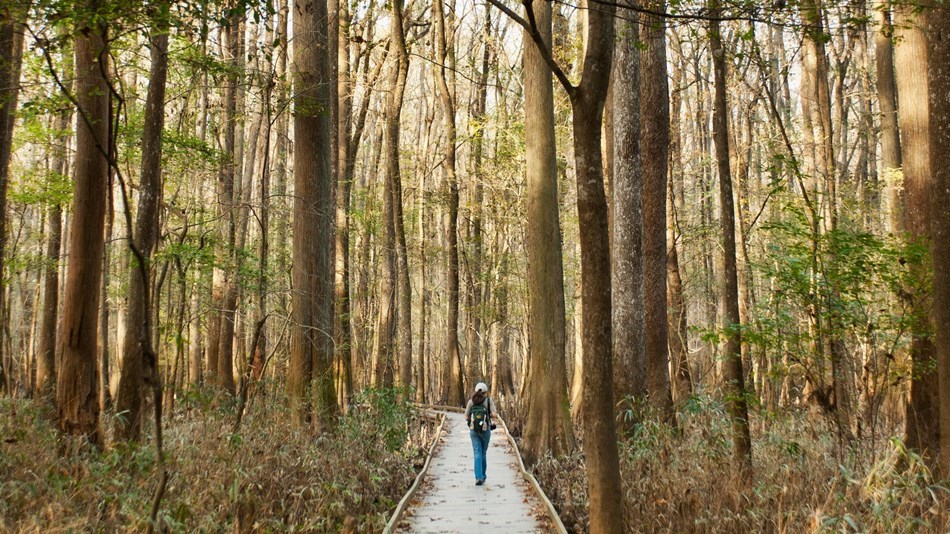
NPS Photo
Come and take a walk through one of our historic battlefields; stroll along the scenic paths; or maybe traverse through the breathtaking backcountry. Be prepared for your walk or hike, keep in mind these general safety tips in mind before starting your adventure:
Know Your Limits
Plan Your Hike
What to Bring
Hike Smart
Know Your Limits
National parks offer a wide range of hiking trails to accommodate different hiking skills and capabilities. You won’t miss out on the spectacular views, wildlife sightings, and connection with nature by choosing an easier trail for your adventure. Don’t overestimate your abilities. Take the time to ask yourself before you go:
-
What is my experience level with hiking? Do I go hiking often or is this my first time hitting the trails?
-
How much equipment, food, and water (weight) can I comfortably carry in a backpack? How long can I carry a backpack with all the essentials?
-
Am I physically fit for the hike I would like to do? Have I practiced hiking up and down steep hills or am I more comfortable on flat, paved paths?
-
Have I ever hiked in this type of environment before? Environmental conditions such as temperature and humidity take time to get used to, especially if you live in a different environment from the park you are visiting.
-
Am I able to go to higher elevations? More effort is required to hike at higher elevations due to the reduced amount of oxygen available in the air. Remember that at 8,000 feet you are at risk of altitude illness, a potentially life-threatening condition. If you don’t know, ask your healthcare provider.
-
Am I hiking alone or do I plan to bring a friend? It is safer to hike with a companion, but if you prefer go solo, take extra measures to ensure that you are prepared since you will be traveling alone.
So...is this the hike for you?
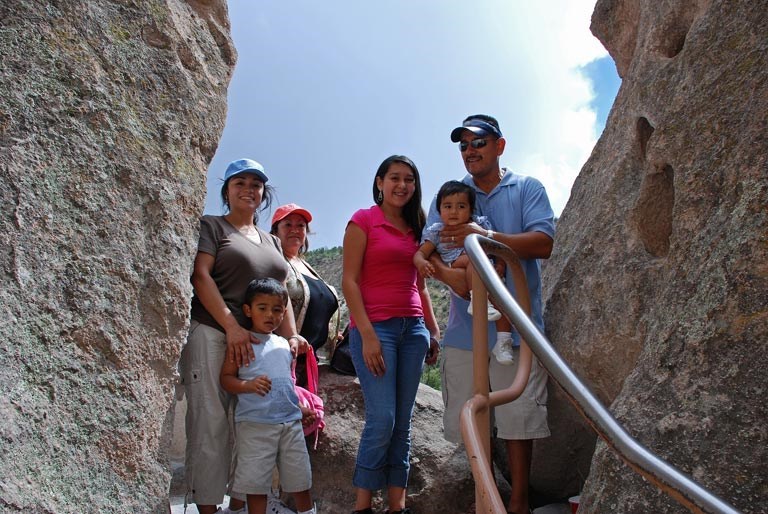
NPS/Sally King
Plan Your Hike
Your safety is your responsibility while hiking in national parks. Planning is an important step in being prepared and ready for your adventure. If you are going to the backcountry, know how to be self sufficient in case you encounter an unexpected hazard or an emergency occurs. If you have never planned a trip or a hike to a national park, read the NPS Trip Planning Guide and then come back to this article to help you prepare for your hike.
-
Pick the right trail for you and your group. Recognize your abilities and the abilities of your group. Pick a trail that everyone can successfully complete and enjoy safely. Check the park’s website or ask a ranger for details on the difficulty level of trails. Rangers can also provide trail recommendations. If you have any medical conditions, consider discussing your plans with your healthcare provider.
-
Leave a Trip Plan. Complete a trip plan that details where you will be walking or hiking, your contact information, when you plan to arrive and return, and who is coming with you. Leave this information with a trusted friend or family member that is not going on the trip with you. The details in this document can be very helpful to search and rescue teams in the case of an emergency.
-
Have an Emergency Plan. Develop an emergency plan for what to do if you or your hiking companions becomes lost or injured. Consider learning CPR and basic wilderness first aid, especially if your planning to hike in the backcountry.

NPS Illustration
- Have a way to communicate. Do not rely on your cell phone because there may not be cellular coverage and reception in your park. Consider having a personal locator beacon, should you need to call for help. If you are using your cell phone, keep the battery fully charged. Searching for a cell signal can quickly drain your phone battery, so consider turning off your phone or switching to airplane mode until you need it.
-
Be weather-ready. Check the weather before you head out on your hike. If conditions in the park are not ideal, don’t take the chance! Be prepared to seek shelter if you encounter severe weather, know what to do in case of lightning or flash flooding. Have your rain equipment packed and ready.
-
Have a Plan B ready, just in case! If weather or other conditions are not ideal for hiking, have a Plan B ready. There are plenty of other ways to explore the park. Check out the park website to see what other activities are available for you, your family and friends!
-
Check for park alerts. Find out about trail closures, wildland fire risks, or other hazards that are in the area.
-
Acclimate to the new altitude. If you plan to hike in higher altitudes than you are used to, take extra time to get used to the new heights. Make sure to get good sleep, drink lots of water, and do not overexert yourself.
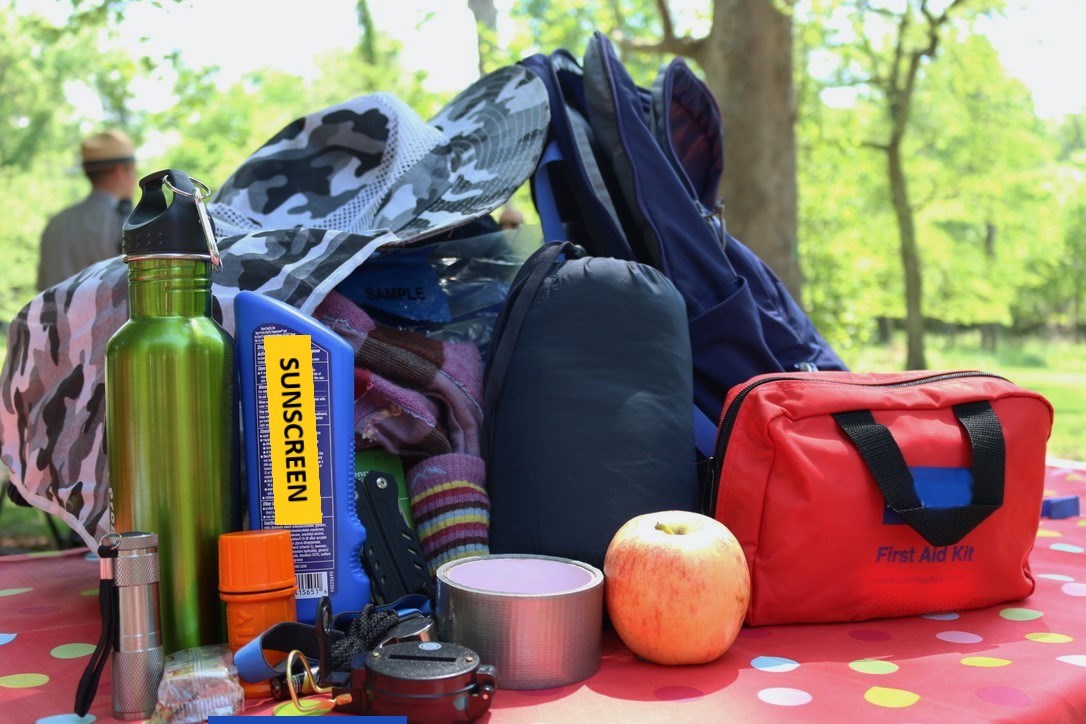
NPS/Lauren Miller
What to Bring
-
The 10 Essentials - You should always pack the 10 essentials. These are the minimum items that everyone should have with them at all times while recreating outdoors. Keep in mind that you may need to pack extra equipment and equipment depending on when you are hiking, where you are hiking, and for how long.
-
Water and Food.
-
If you will be hiking in hot weather, think about how much water you will need for the day. Plan ahead to prevent dehydration or a heat-related illness.
-
Some hikes have reliable water sources whereas others do not, and you may be required to carry extra water or treat water.
-
Think about how long you will be out on your hike. Pack food that does not need to be cooked with good nutritional value in order to keep your energy level high. Bring an extra day’s supply of food, just in case.
-
-
Additional equipment. Research the route and terrain of the hike before you go and identify the right equipment for your trip. Check your equipment to ensure that it is in good working condition and learn how to use it before you set out. Consider packing:
- Proper shoes for walking. Heels, open toed shoes, and flip flops are not ideal for hiking. Opt for:
- Sturdy, rubber-soled hiking boots with ankle support for dirt and gravel trails
- Tennis shoes for paved, urban pathways
- Bug spray
- Thick, wool or synthetic-material socks that wick moisture for longer hikes
(Don’t forget to bring an extra pair!)
- Moleskin for blisters
- Personal Locator Beacon. Some backcountry areas do not have cell service.
- Water filtration and purification equipment
- Extras for overnight hikes. If you are planning an overnight trip, consider having the following equipment:
- Backpack with good support
- Tent
- Sleeping bag and pad
- Stove and fuel
- Extra food and safe storage container
- Equipment repair kit
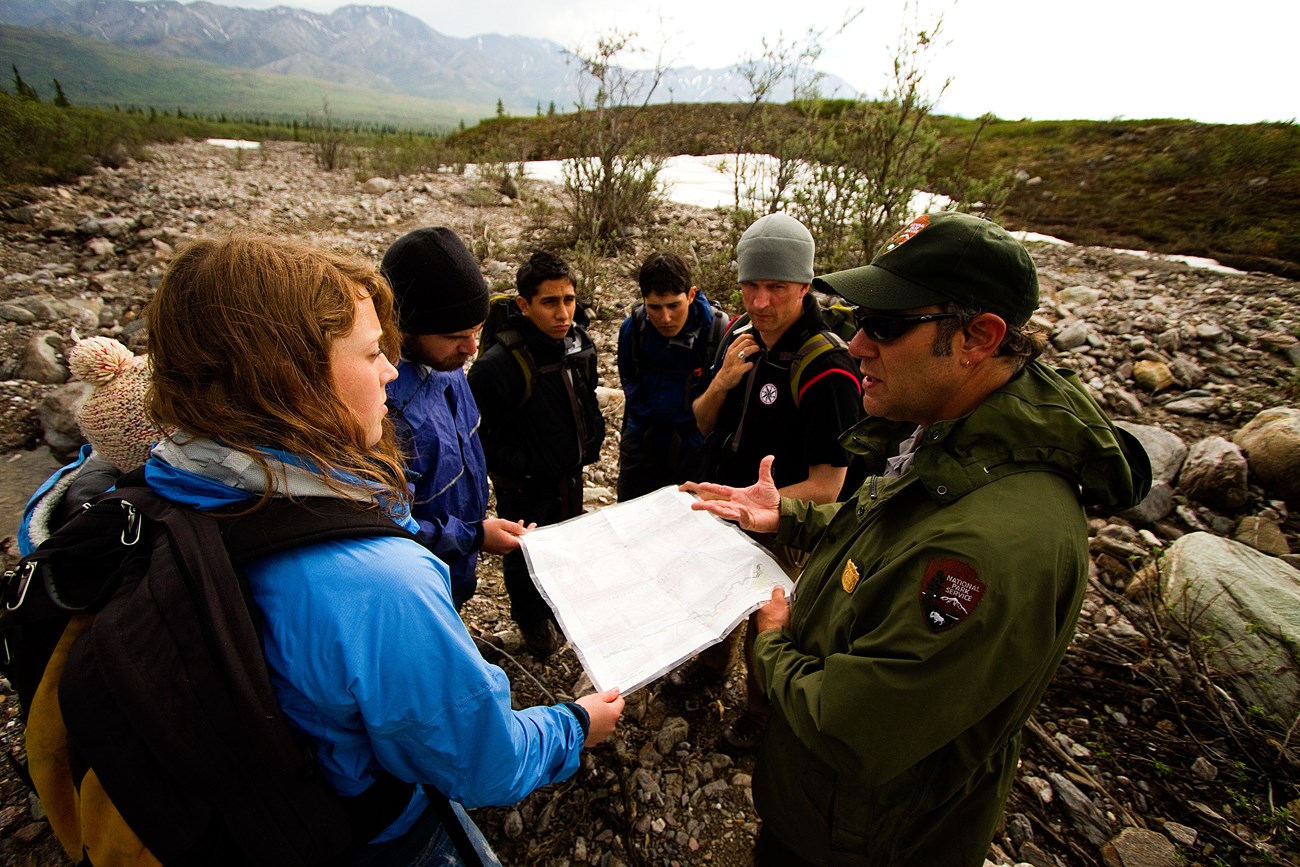
NPS/Nathan Kostegian
Hike Smart
- Ask a Ranger. Stop by the visitor center or ask a ranger about conditions in the park before you head out on your hike. There may be park closures or alerts that are in effect.
- Let the slowest hiker set the pace. Always stay together. Put the slowest hiker near the front to keep your group together. While it may take a bit longer to reach your ultimate destination, staying together helps reduce the chance of someone getting lost and if someone gets injured you are there to help.
-
Keep Track of Your Time and Distance. Remember that your total hike time includes the time it took you to hike to your destination and back to your starting point. If any of your hike, in either direction, is uphill, plan for it to take at least double the time it took you to go downhill. Be aware of the time you set out and turn around so you don’t get stuck outside in the dark. Set a turn around time if your trip is taking longer than planned and make sure you stick to it. Be prepared with the 10 essentials in case your adventure runs late.
-
Yield to uphill hikers. Be courteous and cautious of others out on the trails. If you are downhill, carefully step to the side to let others pass.
- Take breaks often. Know your limits and pay attention to how you are feeling when on the trail. A good rule of thumb is that if you can talk while you are walking, you are traveling at the perfect speed.
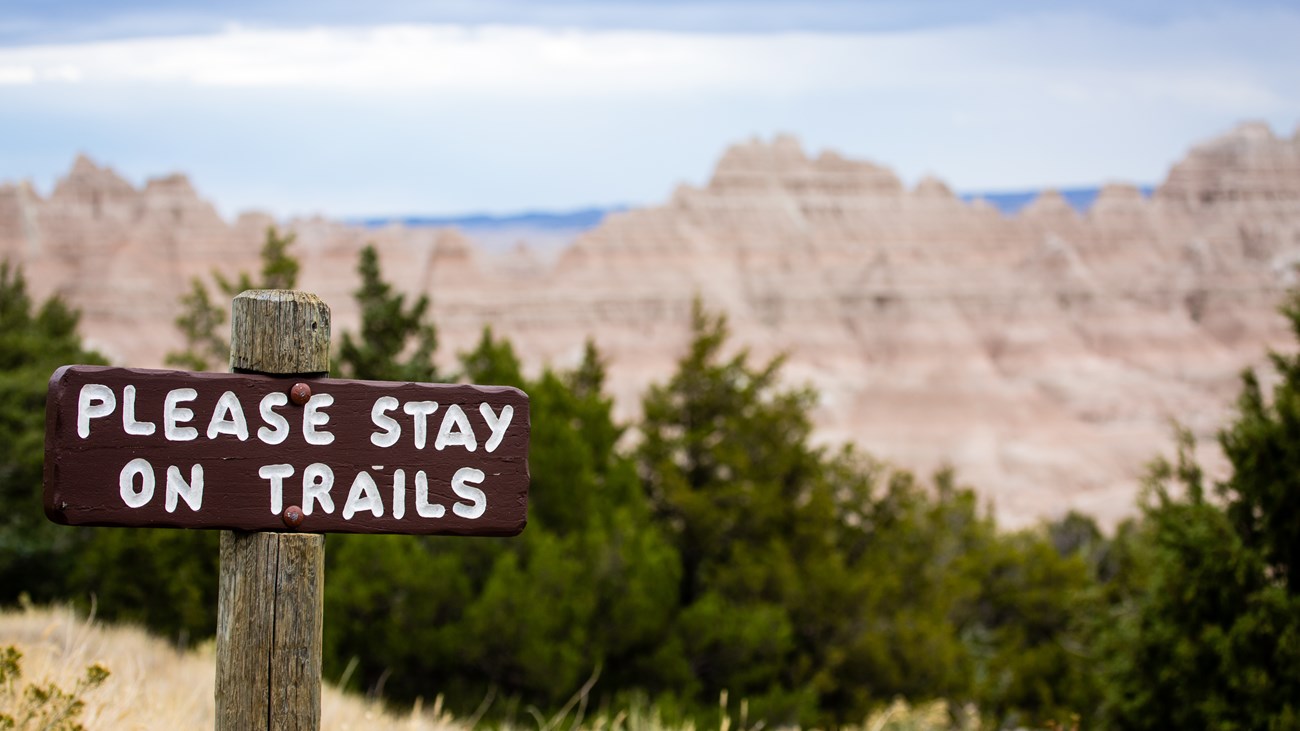
NPS/M. Reed
- Eat snacks and drink water. Hiking can drain your energy quickly. Dehydration and heat exhaustion may sneak up on you while you are hiking on the trails. Be sure to drink as you are thirsty. Snack on nutritional foods such as trail mix, nuts, and granola bars to keep your energy high.
- Take your time and watch your step. Be careful and watch where you are walking, especially on slippery areas or near cliffs. Stick to dry paths and solid rock areas with good footing.
- Stay away from rapid waters and slippery slopes.Be careful and cautious when hiking near water including waterfalls and swift or cold water. Climbing on rocks near waterfalls is extremely dangerous and can lead to a fatal fall or drowning. Do not attempt to cross streams during icy conditions, flooding, moving or white water, or any time you cannot be certain of the water depth. If you plan to cross any rivers, plan and prepare to do so safely.
-
Consult local tide tables and pay attention to tidal behavior. Oceans, estuaries, and their tributary streams are tidal – Tides reverse about every six hours. Beach users, rock climbers, and cave explorers can become trapped, and potentially drown, when incoming tides flood their return to safe ground. Keep track of time so you don’t get caught by the incoming tide.If trapped by a flooding tide, seek higher ground and call for help.
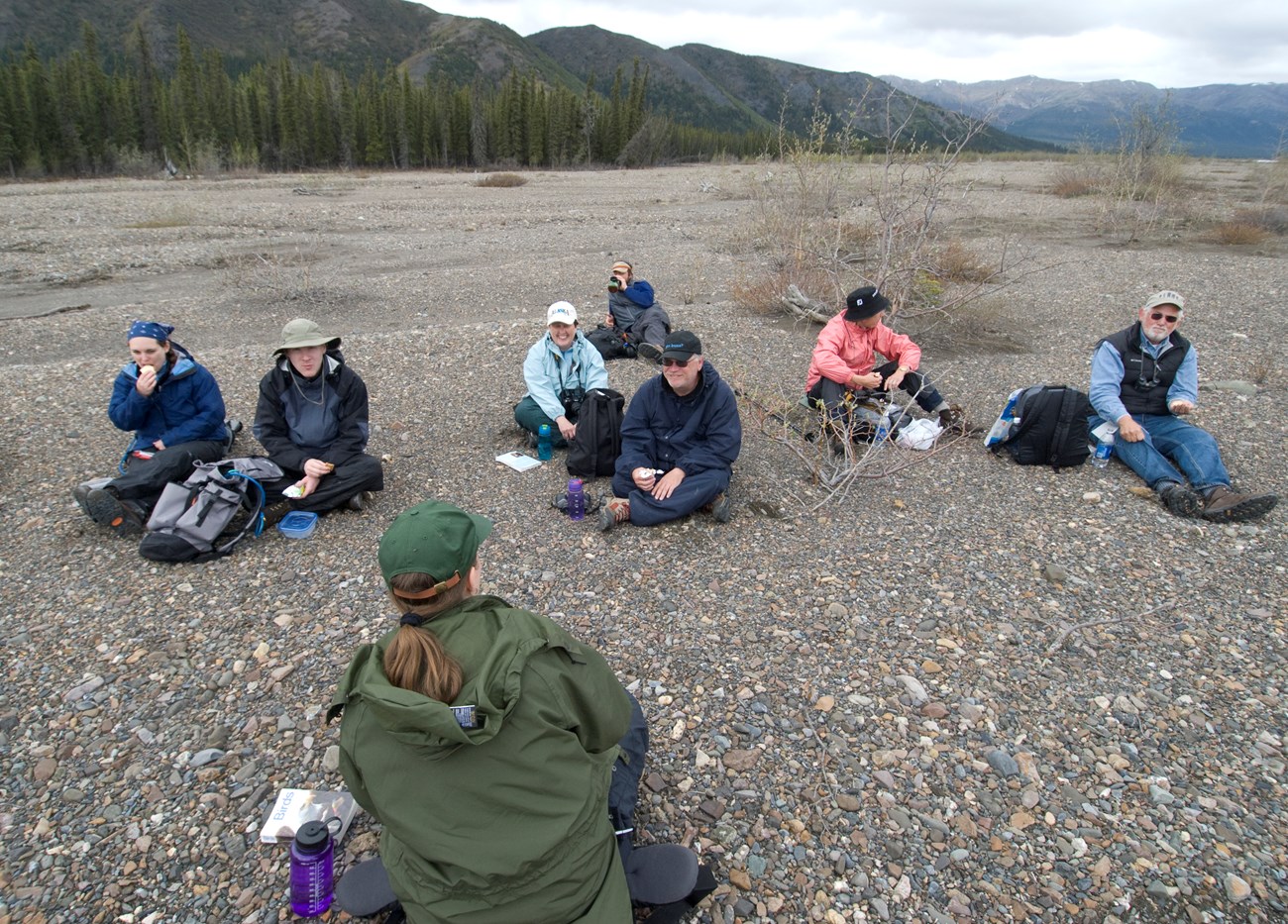
NPS/Kent Miller
-
Spray for mosquitoes and check for ticks. Repellents, netting, long pants, and sleeved clothing are the best ways to protect yourself from insect bites. Wear bug spray repellent to ward off mosquitoes and ticks. Check your clothing and your body for ticks during and after your hike.
-
Be aware of wildlife. You might see some wildlife while you are out exploring. Check out the park’s website to learn more about the animals and educate yourself on responsibly watching wildlife. Store your food properly and do not wear strong scents.
For more information on preparing for an overnight hike, check out how to camp, how to purify water and how to avoid severe weather. Plan and prepare for your trip with help from the NPS Trip Planning Guide and learn more about your Health & Safety in national parks.
